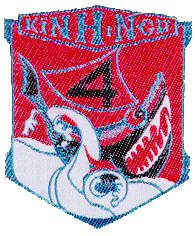|
The Commencement of the Battle of Binh Gia 1964Written by: Major Tran Ngoc Toan
When the NVA advanced towards Binh Gia in Phuoc Tuy Province, the local militia led by a Catholic father retreated and hid in secret fortified bunkers. During the occupation, the militia still supplied valuable information to the Sub district Government Headquarters via radio. Binh Gia was one of the strategic hamlets that were common in the time of President Ngo Dinh Diem. Its inhabitants were 2000 Catholics who had fled in 1954 from Thanh Hoa, Nghe Tinh. The village was situated on a vantage point, and was surrounded by a thick bamboo fence and a mine field. A road ran through the middle of the village. The Communists had never before dared to attack Binh Gia. But with a newly formed regiment, they were more successful in their push. From his hiding spot, the Catholic Father reported the exact size of the NVA force that was harassing his people to III Corps Headquarters. But unfortunately, nobody took it serious. a few went so far as to say: “Oh, Catholics! They are always exaggerate so that we'll send them excessive reinforcement.” The Colonel who was in charge of the Long Le Special Zone also underestimated the enemy: “There aren't any NVA regiments in the area... at most, there are only a few companies.” Two weeks after the start of the battle of Binh Gia, the Joint General Staff moved the 4th Marine Battalion to Di An, Bien Hoa as a reserve for III Corps. The fully equipped battalion awaited action daily in a corner of Bien Hoa Airbase. After an entire APC squadron was ambushed along the Phuoc Tuy Route, the 4th Battalion was finally airlifted into the Boi Loi communist enclave. It was a long helicopter flight. All 700 riflemen of the battalion were finally assembled at the destination late in the afternoon. The entire unit was moved immediately to the site of the ambush in Ham Tan. When the troops passed the village of Binh Gia, the villages came out to light up the roads, and offer the Marines food, water and cigarettes. If all the villages on South Vietnam had had the same mentality, there would not have been Communists, and there certainly would not have been a war. On reaching the site of the ambush, the 4th Battalion saw the wrecks of the M113 APC's and the bodies of their brothers in the ARVN strewn about the desolate rubber plantation. They had been destroyed by mines. The VC had disarticulated weapons from the APC, taken all weapons and robbed the personal possessions of the dead armor men. The 4th Battalion was ordered to pursue the enemy along National Route 15 from Phuoc Tuy in Ba Ria to Long Thanh. However, the enemy were eager to avoid the confrontation. Like a pack of wild animals that had fed on well on human remains, they were content to hide rather than eat again. Thus the 4th Battalion returned to Di An, serving as the last reserve for III Corps. Intelligence reported that NVA troops from Region R in North Vietnam had infiltrated into the South. Region R and the Front for the Liberation of South Vietnam had formed two regiments (Q275 and Q276), and they were already in the battlefields of South Vietnam. Hearing of the VC's designs on Binh Gia, III Corps headquarters sent the 30th Ranger Battalion by helicopter to repel the enemy. Unfortunately, the VC had taken hold around the village, and successfully ambushed the Rangers as soon as they landed. The Rangers fought courageously, but were overpowered. Thanks to the villagers of Binh Gia, more than a thundered survivors were able to seek sanctuary inside the church. From there, they defended the village. The 38th Ranger Battalion was then sent in to reinforce the 30th Battalion.
But they were unable to reach
their brothers-in-arms even after a day of ferocious fighting. Yet,
the gutsy wounded Rangers, with the help of the patriotic villagers
managed to hold the enemy at bay...
Mọi tin tức, bài vở muốn post trên wesite xin email bixitrum@yahoo.com |
|||||
|
||||||
